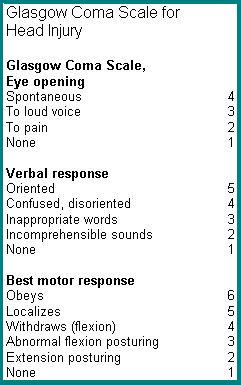In Britain, every nurse is on grade. The grade depends on experience and skill, and each grade has different responsibilities and pay. On the bottom grades are unqualified auxiliary nurses who do the routine work on hospital wards. On the top grades are nursing officer, who are usually administrators.
Auxiliary nurses are on the bottom grades, but student nurses get the lowest pay. However, student don't stay at the bottom of the scale forever. When they qualify, they start working on a middle grade. As they get experience, they can get promotion and move up the ranks to become staff nurse, then sister (charge nurse if a man), and perhaps eventually nursing officer.
Many Nurse work shift, and often they work overtime to earn more money. After basic training, many nurses choose to do further study and become specialists. Nurses can specialize in many different fields, there are triage nurses working in Casualty, and Psychiatric nurses who treat the mentally ill. There are health visitors who visit patients in their own home, practice nurses working in GPs' surgeries, and midwives who deliver babies.
Many of them say they don't get enough pay and respect for the work they do. They say that the work is physically and mentally hard, that they work long hours and get very tired. But they also say that there are many great rewards which have nothing to do with money.
Nursing Care Plan For Acute Head Injury
A. Assessment Findings on Acute Head Injury
Possible causes of acute head injury are assault, automobile accident, blunt trauma, fall and penetrating trauma. The medical team should be perform serious and critical care to handle this cases, So that they can finding correct assessment may happened to the patients such as:
- Disorientation to time, place or person
- Unequal pupil size, loss of pupillary reaction
- Decreased LOC
- Paresthesia
- Otorrhea, rhinorea, frequent swallowing.

B. Diagnostic Evaluation for Acute Head Injury
C. Nursing Diagnose in Acute Head Injury
- Ineffective tissue perfusion (cerebral)
- Risk for Injury
- Decreased intracranial adaptive capacity.
D. Treatment of Acute Head Injury
- Cervical collar (until neck injury is ruled out)
- Craniotomy; surgical incision into te cranium (may be necessary to evacuate a hematoma or evacuate contents to make room for swelling to prevent herniation)
- Oxygen (O2) Therapy; intubation and mechanical ventilation (to provide controlled hyperventilation to decrease elevate ICP)
- Restricted oral intake for 24 to 48 hours
- Ventriculostomy; insertion of a drain into the ventricles (to drain CSF in the presence of hydrocephalus, which may occur as a result of head injury; can also be used to monitor ICP).
E. Drug Therapy Options for Head Injury Cases
- Analgesic; codein phosphate
- Anesthetic; Lidocin (Xylocaine)
- Anticonvulsant; Phenytoin (Dilantin)
- Barbiturate; pentobarbital (Nembutal), if unable to control ICP with diuresis
- Diuretic; mannitol (Osmitrol), furosemide (Lasic) to combat cerebral edema
- Dopamine (Intropin) to maintain cerebral perfusion pressure above 50 mmHg (if blood pressure is low and ICP is elevated)
- Glucocorticoid; dexamethasone (Decadron) to reduce cerebral edema
- Histamin-2 (H2) receptor antagonist such as cimetidine (tagamet), ranitidine (Zantag), famotidine (Pepcid), nizatidine (Axid)
- Mucosal barriel fortifier; sucralfate (Carafate)
- Posterior pituitary : vasopressin (Pitressin) if client develops diabetes insipidus.
F. Planing and Goal on Nursing Care Plan
- The patient will have improved cerebral perfusion
- The patient will have decreased ICP
- The patient will have remain free from injury.
G. Implementation of Nursing Care Plan Procedure
- Assest neurologic and respiratory status to monitor for sign of increased ICP and respiratory distress
- Monitor and record vital sign and intake and output, hemodynamic variables, ICP, cerebral perfusion pressure, specific gravity, laboratory studies, and pulse oximetry to detect early sign of compromise.
- Observe for sign of increasing ICP to avoid treatment delay and prevent neurologic compromise
- Assess for CSF leak as evidenced by otorhea or rinorrhea. CSF leak could leave the patient at risk for infection
- Assess for pain. Pain may cause anxiety and increase ICP
- Check cough and gag reflex to prevent aspiration
- Check for sign of diabetes insipidus (low urine specific gravity, high urine output) to maintain hydration
- Administer I.V fluids to maintain hydration
- Administer Oxygen to maintain position and patency of endotracheal tube if present, to maintain airway and hyperventilate the patient and to lower ICP
- Provide suctioning; if patient is able, assist with turning, coughing, and deep breating to prevent pooling of secretions
- Maintain postion, patency and low suction of NGT to prevent vomiting
- Maintain seizure precautions to maintain patient safety
- Administer medication as prescription to decrease ICP and pain
- Allow a rest period between nursing activities to avoid increase in ICP
- Encourage the patient to express feeling about changes in body image ot allay anxiety
- Provide appropriate sensory input and stimuli with frequent reorientation to foster awarness of the environtment
- Provide means of communication, such as a communcation board to prevent anxiety
- Provide eye, skin, and mouth care to prevent tissue damage
- Turn the patient every 2 hours or maintain in a rotating bed if condition allows to prevent skin breakdown.
H. Evaluation of Goals in the Nursing Care Plan
- The patient has improved LOC
- The patient hasdoest not exhibit signs of increased ICP
- The patient hasremains free from injury
Labels: NCP Head Injury
Read more...!
Management Nursing Care Plans @ 10:29 PM,
,
![]()


